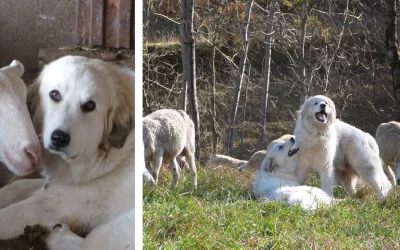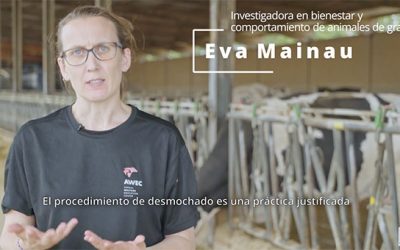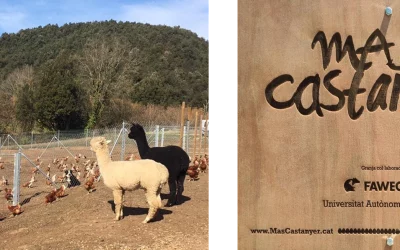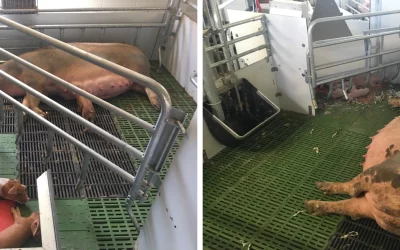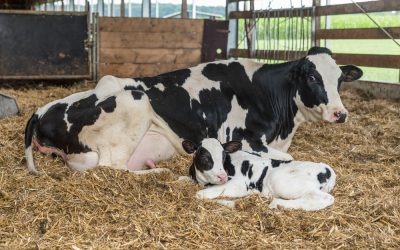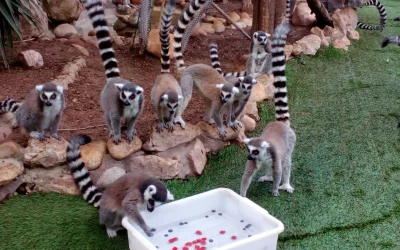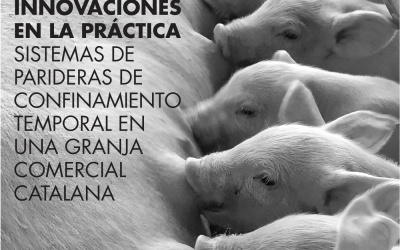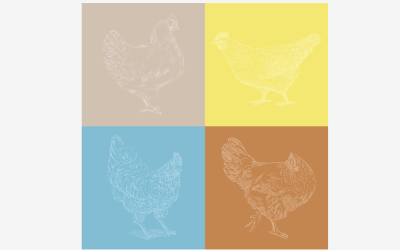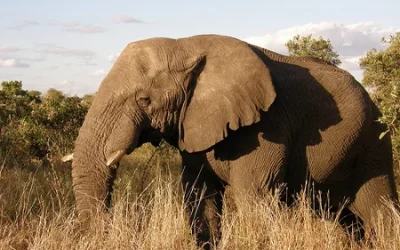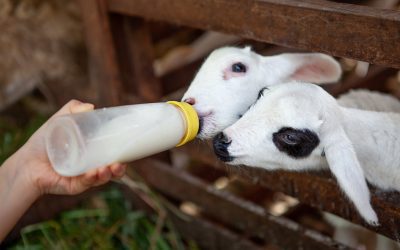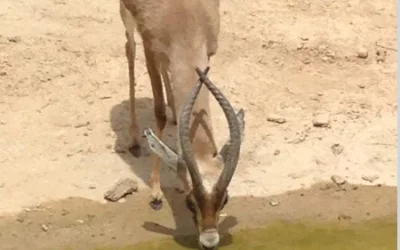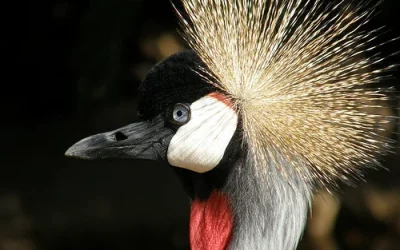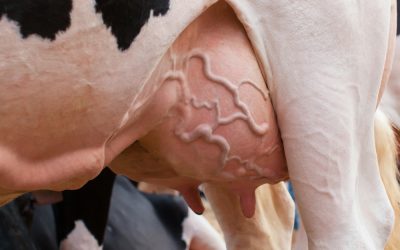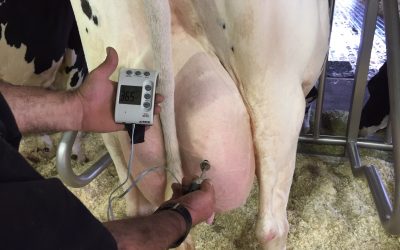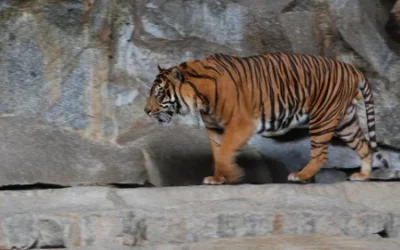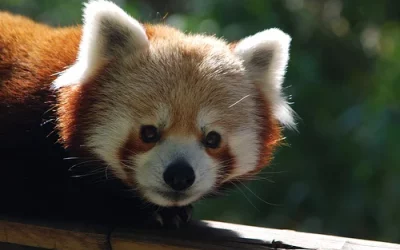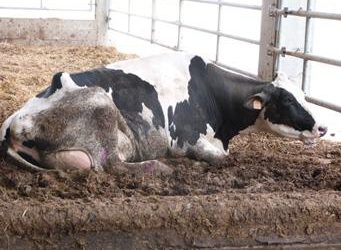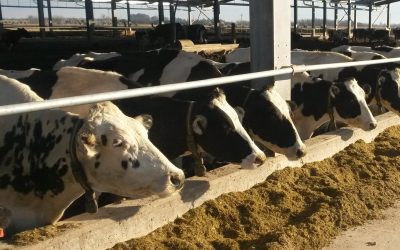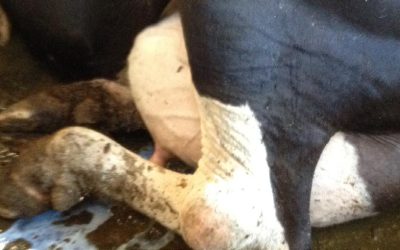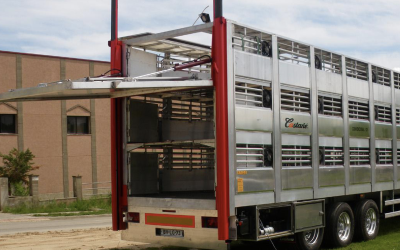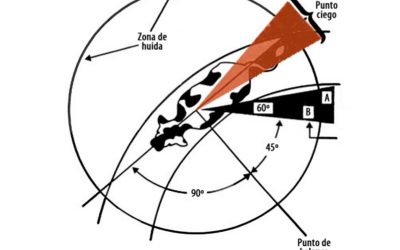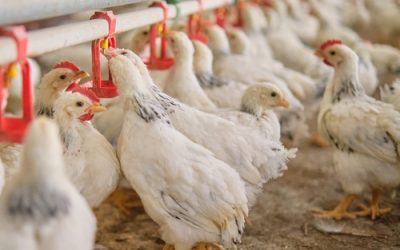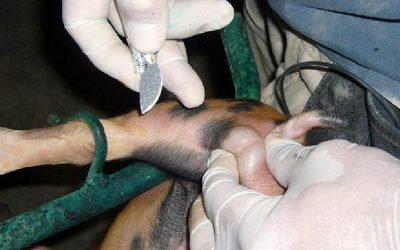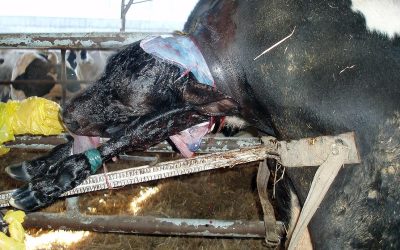Technical info
Stay informed about scientific and technical advances in animal behaviour and welfare.
The Livestock Guardian Dog: the best friend of extensive livestock farming
Livestock guardian dogs (LGDs) remain the most effective non-lethal method to reduce losses to predators. However, despite the efficacy and widespread use of...
Raising pigs with entire tails: experiences from commercial farms
The lack of cases of successful farms raising pigs without tail docking makes farmers, technicians and veterinarians skeptical about implementing these...
Disbudding calves: How to reduce pain and stress?
Pain management in disbudding by cauterization (hot iron) in calves.
Alpacas as guardians of free range hens at Mas Castanyer
Mas Castanyer (www.mascastanyer.cat), an organic farm of 1300 hens located at La Garrotxa Volcanic Zone Natural Park, decided to fight against constant attacks from predators to their hens with an innovative and sustainable method: introducing two young male alpacas to the range.
This practice-led innovation has been part of the Hennovation EU project (www.hennovation.eu). Ecogarrotxa and AlpacaTrax also collaborated with this project.
New housing systems for farrowing sows at Mas Vilallonga
The Rubirola brothers decided to undertake huge structural changes in the farrowing unit of Mas Vilallonga (www.gerfamrubirola.info) located at Riudellots de la Selva to improve the welfare of their sows. Conventional crates have been replaced by free-farrowing pens with temporary crating on slatted floors. Mas Vilallonga innovation has been possible thanks to the high motivation and engagement of several stakeholders of the pig sector: Rotecna, L’Ekip, Jyden, Agrener and AWEC (Universitat Autònoma de Barcelona).
Welfare aspects related to metritis in dairy cows
Metritis is an inflammation of the uterus (uterine cavity and wall). It occurs during the 21 days after delivery.
Environmental Enrichment in Zoo Animals
Environmental enrichment is a goal-directed and pre-established strategy to enhance animal welfare by promoting positive physical and emotional states through stimulating natural rewarding behaviours, and through covering both generic (choice, control, variety and complexity) and specific needs. Environmental enrichment, as a husbandry practice, is as important and necessary as nutrition or veterinary care to ensure optimal animal welfare. At designing and evaluating environmental enrichment, the attention should not be paid to what is being done by the human, what it is, or what it looks like; but to what it generates, induces, promotes, or allows in the animal.
Pain caused by farrowing in the sow (II): Useful indicators and pain relief
Pain is a sensory and emotional experience that has negative effects on animal welfare and production.
Practical Guidelines: Temporary Confinement around Farrowing
Conventional farrowing crates pose welfare concerns for sows and their piglets. Several countries in Europe, including Switzerland, Sweden, and Norway, currently ban its use.
Pain caused by farrowing in sows
Farrowing is a painful and risky process for both the sow and the newborn piglets. Difficult farrowing (dystocia) is associated with severe pain resulting from prolonged farrowing or assisted extraction. Pain caused by farrowing should receive more attention. Optimizing the parturition process will reduce its negative consequences on the welfare and productivity of sows.
Visitor effect on zoo animals
Zoos and other centres that hold wild animals in captivity face different issues that can have a direct impact on the welfare of animals. Lack of space, social stress, presence of visitors, diseases and other health problems, and medical procedures are some of the main challenges facing zoos when they want to guarantee an optimal welfare status for the animals under their care.
Hennovation guidelines: End-of-Lay
Towards the end of the laying period the hens are either removed from the building to be slaughtered for human consumption or are killed within the building and sent for destruction. End of lay (EoL) addresses this last transport of the hens to the slaughterhouse, from the moment of catching until the moment of slaughter and also includes preparation and planning for this event. EoL birds are transported from the farm to slaughterhouse which entails catching the birds at the farm, loading them into the truck, transport and finally unloading them once at the slaughterhouse to be dispatched. During all these steps, if no preventive measures are taken, spent hens can suffer from hunger, thermal stress, pain and anxiety. Thus measures should be taken to reduce stress at all points of the process in order to maintain satisfactory levels of welfare.
HENNOVATION GUIDELINES FEATHER PECKING IN LAYING HENS
Feather pecking occurs within a majority of laying and rearing flocks and in all production systems being especially challenging in non-cage systems where it can spread rapidly. Feather pecking is characterized as pecking at and pulling out the feathers of other birds.
Aggression in pigs and its consequences on welfare
Aggression in pigs occurs as a natural behaviour when stablishing hierarchy after mixing unfamiliar animals.
Loxodonta africana
African elephants welfare assessment protocols
Effects of castration and tail docking on sheep welfare
E.Mainau, D.Temple, P.Llonch, X.Manteca More information Download PDF data sheet Tail docking and castration of males are routine practices in sheep that are...
Gazella Dorcas
Gorcas Gazelles Welfare Assessment Protocols
Welfare assessment in zoo animals: animal-based indicators
Animal welfare has become a priority for modern zoos. Animal welfare assessment protocols should be based on the principle that welfare includes the physical and emotional health as well as the behaviour of animals
Assessment of pain in sheep
Pain is a major welfare issue and sheep may experience pain as a result of several medical conditions, hoof injuries and mastitis being the most important ones.
FVE Survey: “Will the EU succeed in banning the castration of pigs by 2018?”
Many male pigs are surgically castrated in Europe. Often without analgesia. While European law allows this for the first 7 days of age,
Udder pain and discomfort at dry-off in dairy cattke (II)
Dry-off is associated with the engorgement of the mammary gland resulting in udder pain, which is likely to be more pronounced in high-yielding and abruptly-dried cows.
Are there animals that adapt better than others to captivity?
There are significant differences among species in their ability to adapt to captivity. Some species breed well in captivity and usually show no apparent signs of poor welfare, while other highly similar species sometimes live only a short time, breed little or not at all and often show abnormal behaviours.
Lying behaviour and productive efficiency in dairy cattle – A Practical Overview
Resting behaviour is very important for dairy cows and lack of rest and sleep have a very pronounced negative impact on the production and welfare of dairy cows.
Udder pain and discomfort at dry-off in dairy cattle
Drying in dairy cows involves the gradual or abrupt cessation of milking. Gradual cessation of milking is achieved by reducing the energy consumed or the frequency of milking before drying.
Stereotypies as indicators of poor welfare in zoo animals
Stereotypies are one of the most widely used indicators of lack of welfare and there is no doubt that they are indeed very useful. The motivation for stereotypies is complex and surely varies depending on the type of stereotypy being considered.
Concept of Animal Welfare: examples in wild animals
The concept of “animal welfare” includes aspects related to the physical health, emotional state, and behaviour of animals. The welfare of animals kept in zoos and aquariums is important above all for ethical reasons.
Welfare issues during the dry period in dairy cows
The dry period is critical for the welfare of dairy cows and their production during the next lactation.
Heat stress and efficiency in dairy milk production: a practical approach
Heat stress is one of the greatest challenges faced by dairy farmers in many regions of the world. Warm climates depress feed intake, milk production, and reproductive performance in cows.
Neonatal mortality in piglets
Neonatal mortality of piglets is a major economic and animal welfare problem…
Welfare issues related to mastitis in cows
Mastitis is one of the major animal welfare and economic problems in dairy cattle production. Although in recent years there has been a general decline in the incidence of mastitis, high incidences such as 25-45% are still being currently reported. Mastitis is a multifactorial disease in which the environment, the pathogens and the host (cow) interact with each other.
Economic Impact of Stress on Pig Transport
Transporting animals to the slaughterhouse, despite being a relatively short stage in the meat production process, can result in significant economic losses.
Welfare during milking
Milking is considered one of the most important routine tasks done by dairy cattle farmers and is also rated as the most enjoyable task. Milking is also the most frequent direct interaction between dairy cows and the stockperson. Chronic pain associated to diseases or injuries and any stressful situations occurring during milking are likely to produce a decrease in milk yield
Fear caused by a bad human-animal relationship
The quality of the interaction between animals and the people responsible for their care has a very important effect on livestock welfare and production.
Tail biting in pigs
Tail biting is not only an animal welfare problem but also an economic problem, as it leads to a reduction in animal growth, treatment costs and an increase in carcass balances and seizures.
Welfare aspects related to diarrhea in calves
According to the Five Freedoms (FAWC, 1992, 1993), animals should not suffer from pain, injuries and diseases, and suitable prevention and/or rapid diagnosis and treatment should be in place.
Stress in farm animals
The term “stress” has been widely used in biology to describe a set of physiological and behavioural changes elicited by aversive stimuli.
Effect of castration on pig welfare
Castration of males involves the removal of the testicles or the inhibition of testicular function.
Welfare of dairy cows during the peripartum period
A normal calving (eutocia) poses a risk for both the mother and the newborn calf. This risk is greater in the case of a difficult calving (dystocia).
Legal requirements on animal welfare on pig farms
The legal requirements relating to the welfare of pigs on intensive farms are a consequence of the application of Directives 2001/88/EC of 23 October 2001 and 2001/93/EC of 9 November 2001 amending Directive 91/630/EEC of 19 November 1991 on minimum standards for the protection of pigs.
Imparc of dehorning and disbudding on the welfare of calves
Dehorning and disbudding are relatively routine practices in cattle. This is mainly because polled animals are easier to handle and dehorning decreases the risk of injury to both people and other animals.
We would love to hear from you!
If you have any questions about our services, please feel free to contact us. We will be happy to help you with anything you need.

